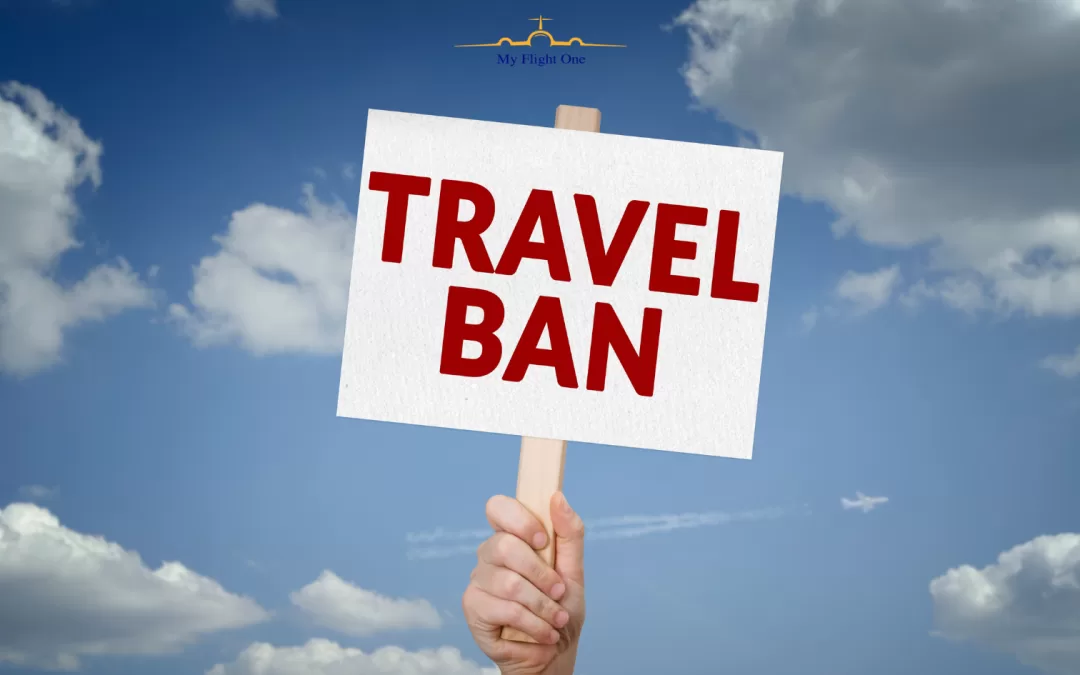The prospect of popular tourist destinations appearing on former President Donald Trump’s proposed travel ban list has sparked significant concern and speculation within the global travel community. Understanding the rationale behind such a controversial move is essential for travelers, policymakers, and tourism-dependent economies alike. This article delves into the reasons these destinations are being considered, the potential impacts on global tourism, and the broader geopolitical implications.
By exploring the factors influencing the inclusion of specific countries on the travel ban list, readers will gain a comprehensive understanding of the complexities involved in international travel regulations. Additionally, we will examine the responses from affected nations and the strategies they might employ to mitigate the consequences of such bans.
Understanding the Proposed Travel Ban
Former President Trump’s administration previously implemented travel bans targeting several countries based on national security concerns. The latest proposal extends this list, reigniting debates on security, immigration, and international relations.
Criteria for Inclusion
- National Security Risks: Countries perceived to pose significant threats due to terrorism or political instability.
- Visa Overstays: Nations with high rates of visa overstays contribute to the decision-making process.
- Reciprocity: Instances where targeted countries impose similar restrictions on U.S. citizens.
Key Destinations on the Proposed List
The proposed ban affects numerous well-known tourist hotspots, each with unique attributes and challenges. Understanding why these specific destinations are targeted provides insight into the administration’s broader objectives.
Middle Eastern Countries
Several Middle Eastern nations are under scrutiny due to ongoing conflicts and high profiles in global terrorism statistics. These factors contribute to their inclusion on the ban list.
African Nations
Some African countries face internal conflicts and governance issues, which the administration cites as reasons for the potential threats they pose.
Impacts on Global Tourism
The inclusion of popular tourist destinations on the travel ban list is likely to have profound effects on global tourism dynamics.
Economic Consequences
- Reduced Tourist Arrivals: A decline in visitors can lead to significant revenue losses for local economies.
- Job Losses: Tourism-related industries may face layoffs and reduced operational capacities.
- Supply Chain Disruptions: The broader economic ecosystem connected to tourism, including hospitality and transportation, will be affected.
Alternatives and Adaptations
Destinations may seek alternative markets to compensate for the loss of American tourists. Additionally, there could be increased investments in local tourism to attract visitors from other regions.
Geopolitical Implications
The proposed travel bans are not merely administrative decisions; they carry significant geopolitical weight that can alter international relations.
Diplomatic Strain
Countries targeted by the travel ban may view the move as hostile, leading to strained diplomatic ties and potential retaliatory measures.
Global Perception of the U.S.
The travel ban can influence how the United States is perceived globally, affecting its soft power and ability to foster international cooperation.
Legal and Social Responses
Inclusion on the travel ban list invites various legal challenges and social responses, both domestically and internationally.
Legal Challenges
- Court Cases: Affected countries may sue the U.S. government, contesting the legality of the bans.
- International Law: There could be disputes regarding violations of international agreements and human rights conventions.
Social Reactions
Public opinion is likely to be divided, with debates centered around security versus discrimination and the rights of individuals versus national policy.
Conclusion
The inclusion of popular tourist destinations on Trump’s proposed travel ban list is a multifaceted issue with far-reaching consequences. From the immediate economic impacts on tourism-dependent nations to the long-term geopolitical shifts, the ramifications are extensive. Understanding the underlying reasons and potential outcomes helps stakeholders navigate the complexities of international travel regulations.
For more detailed information on the latest developments regarding U.S. travel bans, visit the original [Fodor’s article](https://www.fodors.com/news/news/u-s-state-department-considers-new-travel-bans-for-citizens-of-43-countries).
Key Statistics presented by My Flight One
- According to Skift, the Trump Travel Ban 2.0 could impact approximately 697,000 visitors from the affected countries, representing about 1.4% of all U.S. visitors in 2024.
- As reported by Economic Times, the U.S. tourism industry is projected to face a potential loss of up to $64 billion in 2025, largely due to reduced international and domestic travel.
Questions & Answers
Q: What are some criteria for inclusion of countries on the proposed travel ban list?
A: Countries can be considered for inclusion based on factors like national security risks, high rates of visa overstays, and instances of reciprocity in imposing restrictions on U.S. citizens.
Q: Which regions are highlighted as facing scrutiny for potential inclusion on the travel ban list?
A: Middle Eastern countries and some African nations are under scrutiny due to ongoing conflicts, governance issues, and high profiles in global terrorism statistics.
Q: What are some potential impacts of including popular tourist destinations on the travel ban list?
A: The impacts may include reduced tourist arrivals leading to revenue losses, job losses in tourism-related industries, and disruptions in the supply chain connected to tourism.
Q: How might destinations respond to the potential loss of American tourists due to the travel ban?
A: Destinations may seek alternative markets, invest in local tourism to attract visitors from other regions, or adapt their strategies to mitigate the effects of the ban.
Q: What are some geopolitical implications associated with the proposed travel bans?
A: Geopolitical implications include potential diplomatic strains, changes in global perception of the U.S., legal challenges from affected countries, and social reactions that can impact international relations and cooperation.

